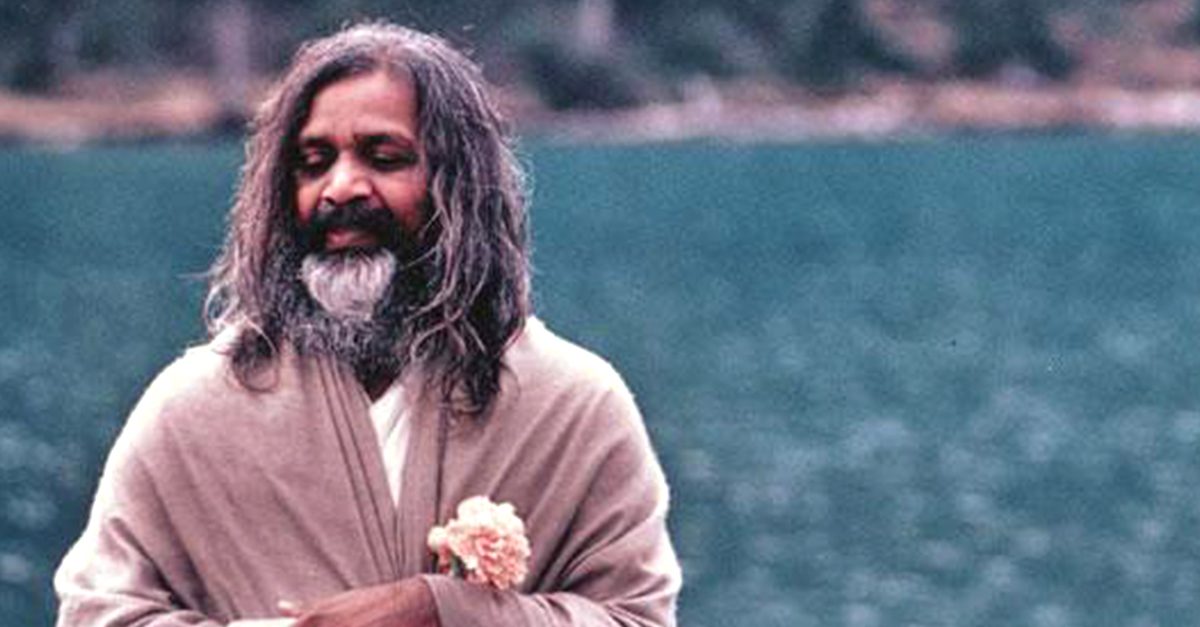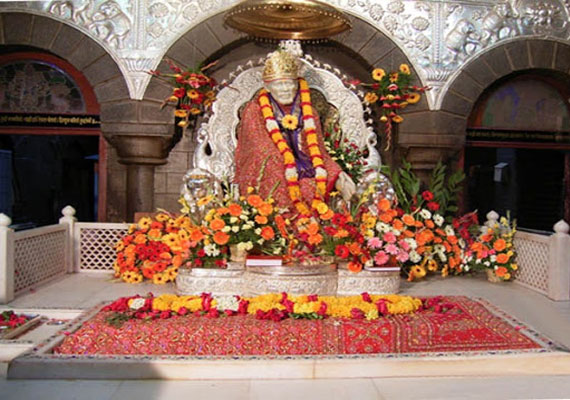Transcendental Meditation
Transcendental Meditation, also known as TM, is a technique for relaxation, stress reduction, and personal development. Developed in the 1950s by Maharishi Mahesh Yogi, TM has gained popularity as a way to improve mental and physical health.
History of Transcendental Meditation
Maharishi Mahesh Yogi, the founder of Transcendental Meditation (TM), began his journey into meditation in the late 1940s. Born in India in 1917, he was a disciple of Swami Brahmananda Saraswati, the Shankaracharya of Jyotir Math in the Himalayas. Maharishi spent several years with his guru and learned the ancient Vedic techniques of meditation.
In the 1950s, Maharishi began to travel around India, teaching meditation to interested individuals. His teachings emphasized the importance of deep relaxation, which he believed was essential for achieving inner peace and spiritual growth.
In 1958, Maharishi established the Spiritual Regeneration Movement in India, which aimed to promote meditation as a means of achieving world peace. He began to teach his meditation techniques to a wider audience, and by the 1960s, his teachings had spread to Europe and the United States.


In 1961, Maharishi founded the International Meditation Society, which later became the Transcendental Meditation movement. The goal of the movement was to bring the benefits of meditation to people around the world, regardless of their religious or cultural background.
Maharishi’s approach to meditation was unique in that it was designed to be easy to learn and practice, even for people with no prior experience. He developed a specific technique known as Transcendental Meditation, which involves the use of a mantra, a sound or phrase repeated silently in the mind, to achieve a state of deep relaxation and inner peace.
Over the years, Maharishi continued to refine and improve his meditation technique, incorporating insights from modern science and medicine. He established the Maharishi University of Management in Iowa in 1971, which was dedicated to exploring the potential of meditation in education, health, and other fields.
Today, Transcendental Meditation has become one of the most popular meditation techniques in the world, with millions of people practicing it daily. Maharishi Mahesh Yogi’s vision of promoting world peace through meditation continues to inspire people around the globe.
In conclusion, Maharishi Mahesh Yogi’s journey into meditation began with his guru in the Himalayas, and he went on to spread the benefits of meditation to people around the world. His legacy continues to inspire millions of people to practice Transcendental Meditation and experience the inner peace and well-being it can bring.
What is Transcendental Meditation?
Transcendental Meditation is a simple, natural, and effortless technique that allows you to relax deeply and experience a state of restful alertness. Unlike other forms of meditation, TM does not require any special concentration, focus, or discipline. It involves the use of a mantra, a word or sound, repeated silently to oneself, to help the mind settle down and become more tranquil.


Benefits of Transcendental Meditation
Research has shown that TM has numerous benefits for both mental and physical health. Here are some of the most significant benefits of TM:
- Reduces stress and anxiety
- Improves cardiovascular health
- Boosts brain function
- Enhances creativity and productivity
- Promotes inner peace and happiness
- Increases self-awareness and emotional intelligence
How to do Transcendental Meditation
Here’s how to do TM in seven simple steps:
Step 1: Find a Certified TM Teacher
To learn TM, you need to find a certified TM teacher who can guide you through the process. TM teachers are trained to provide personalized instruction and support to help you get the most out of your meditation practice.
Step 2: Attend an Introductory Lecture
Before you begin your TM practice, you’ll need to attend an introductory lecture to learn more about the technique and how it works. This lecture typically lasts around an hour and covers the benefits of TM, the science behind it, and what to expect from the practice.
Step 3: Personal Instruction
After the lecture, you’ll receive personal instruction from your TM teacher. This one-on-one session typically lasts around 90 minutes and covers everything you need to know to practice TM successfully.
Step 4: Receive Your Mantra
During your personal instruction, your TM teacher will give you a specific mantra to use during your practice. This mantra is chosen based on your individual needs and is meant to help your mind settle down and become more tranquil.
Step 5: Practice Twice a Day
To get the most out of TM, you’ll need to practice twice a day, ideally in the morning and evening. Each session should last around 20 minutes.
Step 6: Sit Comfortably
Find a comfortable, quiet place to meditate where you won’t be disturbed. Sit in a comfortable chair with your feet on the ground, or sit cross-legged on a cushion on the floor.
Step 7: Repeat Your Mantra
Close your eyes, take a few deep breaths, and begin repeating your mantra silently to yourself. Allow your mind to become settled and focused on the sound of the mantra. If your mind wanders, gently bring your attention back to the mantra.
Pros of Transcendental Meditation
1. Effective Stress Reduction
One of the most significant benefits of Transcendental Meditation is its ability to reduce stress and anxiety. Regular practice of TM has been shown to lower cortisol levels, the hormone associated with stress, and reduce symptoms of anxiety and depression.
2. Improves Brain Function
Research has shown that TM can improve cognitive function, including memory, concentration, and creativity. It has also been found to increase gray matter in areas of the brain associated with emotional regulation and self-awareness.
3. Easy to Learn and Practice
Transcendental Meditation is easy to learn and practice, requiring only 20 minutes twice a day. Unlike other forms of meditation, it does not require any special concentration, focus, or discipline.
4. Personalized Instruction
TM is typically taught by a certified teacher who provides personalized instruction and support. This ensures that you learn the technique correctly and get the most out of your practice.
5. Enhances Well-being and Happiness
TM has been shown to enhance overall well-being and happiness. Regular practice of TM can lead to increased feelings of inner peace and contentment.
Cons of Transcendental Meditation
1. Expensive
One of the biggest drawbacks of Transcendental Meditation is its cost. The technique is typically taught by certified teachers who charge a fee for instruction. This can be a significant barrier for many people who are interested in learning TM.
2. Lack of Transparency
TM has been criticized for its lack of transparency. The organization that oversees TM, the Maharishi Foundation, has been accused of being secretive and not providing enough information about the technique.
3. Not Scientifically Proven
While there is some research to support the benefits of TM, some critics argue that the evidence is not strong enough to conclusively prove its effectiveness.
4. Requires Regular Practice
Like any form of meditation, TM requires regular practice to experience its benefits. This can be challenging for some people who struggle to maintain a consistent practice.
5. Not Suitable for Everyone
Transcendental Meditation is not suitable for everyone. Some people may find it difficult to sit still and focus for 20 minutes twice a day. Additionally, TM is not recommended for people with certain medical conditions, such as bipolar disorder or schizophrenia.
Overall, Transcendental Meditation can be an effective tool for improving mental and physical health. While there are some drawbacks to the technique, many people have found it to be a valuable addition to their self-care routine. If you’re interested in learning TM, it’s important to do your research and consider whether it’s the right practice for you.
Health Benefits Of Transcendental Meditation
Transcendental Meditation has been shown to provide a range of benefits for both physical and mental health. Here are some of the health problems for which TM has been found to be particularly effective:
1. High Blood Pressure
Studies have shown that TM can help lower blood pressure in people with hypertension. It is believed that the relaxation response triggered by TM helps to reduce the activity of the sympathetic nervous system, which is responsible for the “fight or flight” response.
2. Anxiety and Depression
Transcendental Meditation has been found to be effective in reducing symptoms of anxiety and depression. Studies have shown that regular practice of TM can help to reduce cortisol levels, which are associated with stress and anxiety.
3. Insomnia
TM can also be an effective tool for treating insomnia. Research has shown that regular practice of TM can help improve sleep quality, reduce the time it takes to fall asleep, and increase total sleep time.
4. Chronic Pain
TM has been found to be helpful in managing chronic pain, such as back pain and headaches. It is believed that the deep relaxation state induced by TM can help to reduce pain perception and improve mood.
5. Cardiovascular Disease
TM may also be beneficial for people with cardiovascular disease. Studies have shown that regular practice of TM can help to reduce the risk of heart disease and stroke, as well as improve overall cardiovascular health.
While TM has been found to be effective for a range of health problems, it is important to note that it is not a substitute for medical treatment. If you are experiencing any health problems, it is important to consult with your healthcare provider to determine the most appropriate course of treatment.
PubMed studies on Transcendental Meditation
Here is the list of studies I could find and that show the effectiveness of TM
- Efficacy of Transcendental Meditation to Reduce Stress Among Health Care Workers: https://pubmed.ncbi.nlm.nih.gov/36121655/
- Effects of the transcendental meditation technique on trait anxiety: https://pubmed.ncbi.nlm.nih.gov/24107199/
- Neurophysiological, cognitive-behavioral and neurochemical effects in practitioners of transcendental meditation: https://pubmed.ncbi.nlm.nih.gov/31166449/
These studies provide evidence for the effectiveness of Transcendental Meditation for a range of health issues, including blood pressure, quality of life, insomnia, anxiety and depression, cardiovascular disease, post-traumatic stress disorder, alcohol abuse, cognitive function, and brain function.
Transcendental Meditation Alternatives
If Transcendental Meditation (TM) is not appealing to you, there are plenty of other meditation techniques and alternative medicine approaches to explore. This allows you to find a practice that suits your needs and preferences the most.
For instance, if you’re interested in meditation but unsure about TM, there are numerous alternative meditation techniques to consider. Below are some popular choices:
- Mindfulness Meditation: This technique involves focusing on the present moment, without judgment. It can be practiced while sitting, walking, or even doing everyday activities like washing the dishes.
- Loving-Kindness Meditation: Also known as Metta meditation, this technique involves sending love and compassion to oneself and others.
- Vipassana Meditation: This technique involves observing the breath and body sensations to cultivate self-awareness and insight.
- Zen Meditation: Also known as Zazen, this technique involves focusing on the breath and emptying the mind to achieve a state of calm and clarity.
- Yoga: This ancient practice incorporates physical postures, breathing exercises, and meditation to promote physical, mental, and emotional well-being.
- Guided Meditation: This technique involves following the guidance of a teacher or recording to relax the mind and body.
- Chakra Meditation: This technique involves focusing on the energy centers in the body to promote balance and healing.
- Transcendental Meditation Alternatives: Some similar techniques to TM include Primordial Sound Meditation, which uses a personalized mantra, and Vedic Meditation, which focuses on the repetition of a specific sound.
Overall, the key to finding the right meditation technique for you is to experiment with different practices and find one that resonates with your unique needs and preferences.
Celebrities Who Swear by Transcendental Meditation
Here is the list of celebs that publicly claimed they use TM often:
- Oprah Winfrey – Media executive, talk show host, and philanthropist
- Hugh Jackman – Actor known for his roles in “X-Men” and “The Greatest Showman”
- Katy Perry – Singer-songwriter and judge on “American Idol”
- Cameron Diaz – Actress known for her roles in “There’s Something About Mary” and “Charlie’s Angels”
- Jerry Seinfeld – Comedian and actor known for his eponymous sitcom
- Ellen DeGeneres – Comedian, talk show host, and actress
- Clint Eastwood – Actor and director known for his roles in “Dirty Harry” and “The Good, the Bad and the Ugly”
- Gisele Bundchen – Supermodel and businesswoman
- Russell Brand – Comedian and actor known for his roles in “Forgetting Sarah Marshall” and “Get Him to the Greek”
- Howard Stern – Radio personality and host of “The Howard Stern Show”
- Jennifer Aniston – Actress known for her role in “Friends” and films such as “Marley & Me” and “The Break-Up”
- David Lynch – Filmmaker and creator of “Twin Peaks”
- George Lucas – Filmmaker and creator of “Star Wars” and “Indiana Jones”
- Tom Hanks – Actor known for his roles in “Forrest Gump” and “Saving Private Ryan”
- Paul McCartney – Singer-songwriter and member of The Beatles
- Gwyneth Paltrow – Actress and founder of the lifestyle brand, Goop
- Martin Scorsese – Filmmaker known for his work on “Goodfellas” and “The Departed”
- Dr. Oz – Cardiac surgeon and host of “The Dr. Oz Show”
- Jim Carrey – Comedian and actor known for his roles in “Ace Ventura” and “The Truman Show”
- Lady Gaga – Singer-songwriter and actress known for her roles in “A Star is Born” and “American Horror Story”
- Liv Tyler – Actress known for her roles in “The Lord of the Rings” trilogy and “Armageddon”
- Miranda Kerr – Model and founder of Kora Organics
- Nicole Kidman – Actress known for her roles in “Moulin Rouge!” and “Big Little Lies”
- Sheryl Crow – Singer-songwriter and musician
- Russell Simmons – Entrepreneur and co-founder of Def Jam Recordings
- Jennifer Lopez – Singer, actress, and dancer
- Beyonce – Singer-songwriter and actress
- Stevie Wonder – Singer-songwriter and musician
- Tina Turner – Singer-songwriter and actress
- Donovan – Singer-songwriter and musician
- Mia Farrow – Actress known for her roles in “Rosemary’s Baby” and “Hannah and Her Sisters”
- Roseanne Barr – Comedian and actress known for her eponymous sitcom
- Bob Roth – TM teacher and advocate




